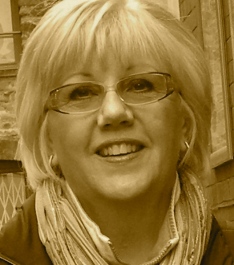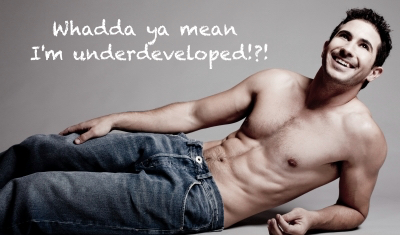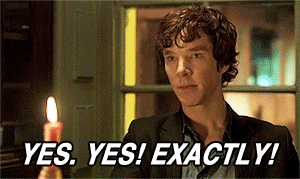Memorable characters: writers may create them, but readers give them life

Book reviewer and blogger Cathy Ryan from Between the Lines bookblog
My guest blogger today is Cathy Ryan, well-known for her entertaining and insightful reviews over at Between the Lines. Cathy brings us a unique blend of perspectives, as she talks about developing memorable characters from the viewpoints of a sophisticated reader as well as two very different writers.
Three may be a crowd, but there’s still plenty of room for you to grab your favorite beverage and join us over here near the fire. Welcome Cathy!
 What readers look for in character development— and how two different writers deliver it.
What readers look for in character development— and how two different writers deliver it.
Guest post by Cathy Ryan
with special guests—authors Sarah Cradit & Mark Berry
 Today I’m dropping by Barb Taub’s wonderful blog. Thanks so much for inviting me, Barb. You’re a very tough act to follow, but here goes…
Today I’m dropping by Barb Taub’s wonderful blog. Thanks so much for inviting me, Barb. You’re a very tough act to follow, but here goes…
There’s no doubt about it, character development is an art. Characters are at the heart of a story; it doesn’t really matter how good the plot if the characters fall flat.
First and foremost, characters—even if the story isn’t necessarily character-driven—need to stand out and be memorable in some way. They should move forward, grow, and develop from how they first appear in the story. Do I, as a reader, need to know how their past shapes the present? Yes, I think so. In most cases it’s very relevant to building up a picture, which for me is essential. A character is more appealing and complex with strengths and weaknesses, flaws, individualistic traits and mannerisms and as such is much more likely to hold my attention. If I can’t get drawn in, invested and care what happens, the story fails.

Short and clear descriptions are vital to get a visual image so a picture of the characters can develop through the story. Their personalities play as large a part and can be shown through thoughts and effective dialogue. The way characters relate to each other also tells me a lot. A character’s thought process and internal dialogue is a perfect tool to give insight and bring a character to life. It helps to find out how people in the story experience their world and place in it.

Sarah Cradit is the USA Today Bestselling Author of the Paranormal Southern Gothic series, The House of Crimson & Clover, born of her combined passion for New Orleans, family sagas, and the mysterious complexity of human nature. Her work has been described as rich, emotive, and highly dimensional. Sarah blogs at …and then there was Sarah
Sarah Cradit, author of The House of Crimson and Clover series (whose characters have evolved enormously and continue to do so) says of her technique—
“When I begin developing a new character, I steer clear of detailed fact sheets—in the beginning. Reason being, as long as I know enough about them to get into their head, they’ll tell me the rest. What they like, don’t like…and where they want their story to go. Because, they will tell me, sooner or later. I know some readers are skeptical when authors insist their characters “talk” to them, so here’s another way to look at it: my subconscious is always working overtime, and doesn’t always give me a full agenda. Many of the tiny details come together in ways only an active subconscious explains.”
Another good example is in a book I read recently, Hollywood Shakedown by Mark Barry. The protagonist, Buddy Chinn, is described in such a way that an immediate physical picture springs to mind, as well as an idea of his personality. And, even though initially he isn’t particularly likeable, he is distinctive. As the story progresses I can understand how Buddy’s past issues relate to his present and this gives me an appreciation and understanding of his character and serves to make him more likeable.
Mark’s approach to character development demonstrates why his characters are so memorable.

Mark Barry, author of Hollywood Shakedown, the highly acclaimed Carla and the top selling Ultra-Violence, is a writer and publisher based in Nottingham and Southwell. Mark blogs at The Wizard’s Cauldron.
“First thing. Make sure you, as an author, can see your character. Make them so real that you can have conversations with them in your living room. Give them three dimensions. Draw a profile of them on a notepad. Give them history and a reason for their behaviour. Plot out their life story, relatives, achievements and significant events. Why do they behave as they do? There must always be a reason and a reason a reader can trace back in the text; an internal validity that remains consistent throughout the novel. I always try to make characters like someone a reader is likely to know or be aware of. That anchors a reader to the contest and gives them a head start with their imaging.
Unlike many modern authors, particularly thriller writers, I do not use TV or film as a modelling device, as the character image becomes a copy of a copy of a copy, so you will probably not recognise any of my characters from popular culture—though I do use literary references; all the time, actually.
Case in pont: Buddy, in Hollywood Shakedown, is a slight cheat. He was originally called Buddy Chinaski and he was Henry Chinaski, the son of the literary alter-ego of poet and author Charles Bukowski, so I had models.
Butddy is a BIG guy and he behaves like a big guy. He is big, bordering of fat, due to all the drinking he does. He’s lazy and not very attractive, in the conventional sense. This explains, to some extent, both the insecurity he shows towards his beautiful, but “free-spirited” girlfriend Monique and the forgiveness he demonstrates when her flightiness gets too much. He has massively low self-esteem, even about his writing. He’s belligerent, scruffy, cynical, potentially violent, has few friends and while he can be funny, you hardly ever see that side.
Everything I wrote about Buddy has the above paragraph as a context. I gave him family history (his father was absent, but involved at weekends; his relationship with his mother is fractured, distant) and I gave him a publication history. There are quirks, some of which didn’t make the book (he hates flying, for example and he never wears hats, unlike many Americans). And of course, he is a massive drinker, bordering on alcoholic, so much of the book’s scenery takes place at parties, pubs, bars.
Many of my books feature alcoholics, drug addicts, and gamblers—purely because, for me, they are much more interesting people to write about and I like to challenge reader stereotypes. Of those who read Hollywood, the vast majority of readers like Buddy. I didn’t write him like that at all. I thought they would hate him.
Just to conclude—Hollywood has a big cast list, my biggest (something, in the modern world of short books and novellas, which shall remain so), and I had to write each character interaction consistently—speech patterns, slang, emphasis, accent, speed—so I had to write about fourteen CVs in total.
I did this because I thought there was a market for old school long old books. There isn’t, so now, I tend to keep the characters I use to an absolute minimum, but each are written to serious depth.”
So, the approach to character development is a process individual to the author, and certainly in the highlighted cases, both work wonderfully well.
To summarise, characters work best and grab my interest and attention when complete with a history (as much as necessary for the story), flaws, aspirations, fears, hopes. They develop through relationships and overcoming—or not—the challenges and difficulties thrown in their path. Take two very well-known characters as examples. Heathcliff, after being rejected by Catherine, evolves into a bitter, cruel and revengeful man. Another classic, although over-the-top, example is Scrooge. His character undergoes a hugely significant transformation, much more pronounced than most would need to be, but these two characters have more than stood the test of time. And that speaks for itself.

I’m glad you agree, Benedict 😉
**My sincere thanks to Sarah Cradit and Mark Barry for their contribution.**

Reblogged this on BetweenTheLines and commented:
Thanks so much for inviting me over, Barb 🙂
LikeLike
Characters really do make or break a book, if you can relate to them or understand them or feel emotions about them it really gets a reader into the storyline.
LikeLike
Brilliant post and very helpful. My children think I’m a bit crazy when I tell them my characters speak to me, I get the eye roll and that ‘she’s off again’ look. I guess it’s a good job my characters do speak otherwise I’d never chat to anyone ha ha 😉
LikeLike
What a brilliant post, thanks to all concerned. I particularly liked this bit from Mark: “I always try to make characters like someone a reader is likely to know or be aware of”. I think that’s often what makes a reader get really involved with a character – that they can actually relate to them. That it could be THEM, in another life. I’m a great fan of Mark Barry anyway, btw!!
I’m really glad you said about knowing about the character for themselves, not just as how they relate to the story – I’ve been criticised in the past for putting in too much backstory about characters in my books, but I think it’s what makes them who they are, as it does in real life.
A round of applause, ladies and gentleman 🙂
LikeLike
Excellent post – and very timely for me. I’m currently getting to know the characters who will take centre stage in my next book. When reading or writing, it’s the characters who bring a story to life. So pleased Benedict is in agreement with the writers of this super post. 🙂
LikeLike
Enjoyed this …and thanks to all who particpated
LikeLike
Yay for well placed backstory!! I love it because it makes the characters who they are as it does for all of us. I always say a private happy birthday to my Emma when that date rolls around because I know her that well and it’s only normal…isn’t it? Great post guys rally enjoyed reading this 🙂
LikeLike
Reblogged this on Smorgasbord – Variety is the spice of life and commented:
Barb Taub with guest Cathy Ryan and her own guests, with a very interesting post on character development from both sides of the book.. the reader and the writer.
LikeLike
Wonderful post.
LikeLike
Thanks so much for all the lovely comments 🙂 and special thanks to Sarah and Mark.
LikeLike
Just dropping by to say I hope you had a terrific Thanksgiving and long holiday weekend!
LikeLike
Reblogged this on Barrow Blogs: .
LikeLike
Wonderful post, Barb and Cathy. I agree with you Cathy. If a character isn’t developed enough, or properly, I loose interest.A good plot is important too, but if you don’t have strong characters to drive the plot, it will probably fall flat with me.
LikeLike